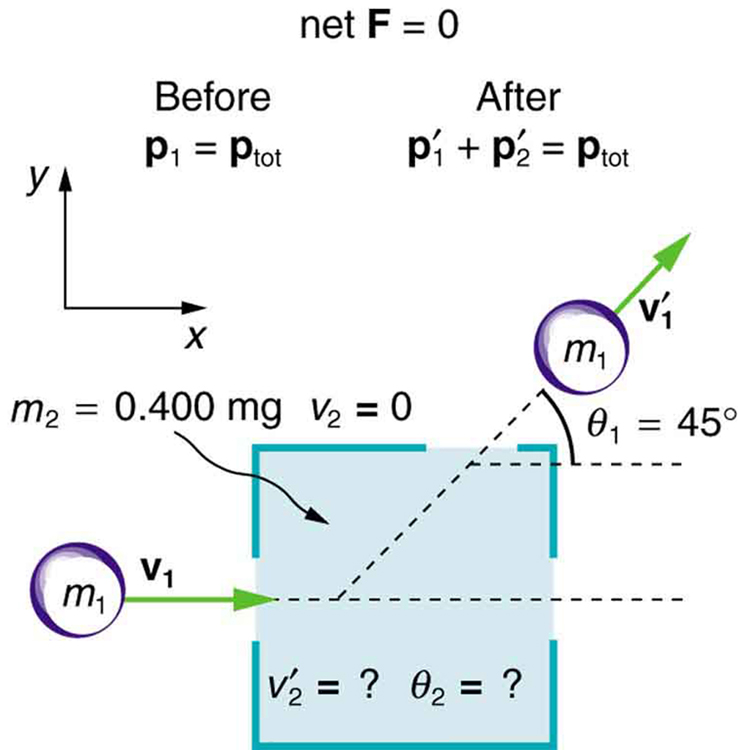| << Chapter < Page | Chapter >> Page > |
Suppose the following experiment is performed. A 0.250-kg object is slid on a frictionless surface into a dark room, where it strikes an initially stationary object with mass of 0.400 kg . The 0.250-kg object emerges from the room at an angle of with its incoming direction.
The speed of the 0.250-kg object is originally 2.00 m/s and is 1.50 m/s after the collision. Calculate the magnitude and direction of the velocity and of the 0.400-kg object after the collision.
Strategy
Momentum is conserved because the surface is frictionless. The coordinate system shown in [link] is one in which is originally at rest and the initial velocity is parallel to the -axis, so that conservation of momentum along the - and -axes is applicable.
Everything is known in these equations except and , which are precisely the quantities we wish to find. We can find two unknowns because we have two independent equations: the equations describing the conservation of momentum in the - and -directions.
Solution
Solving for and for and taking the ratio yields an equation (in which θ 2 is the only unknown quantity. Applying the identity , we obtain:
Entering known values into the previous equation gives
Thus,
Angles are defined as positive in the counter clockwise direction, so this angle indicates that is scattered to the right in [link] , as expected (this angle is in the fourth quadrant). Either equation for the - or -axis can now be used to solve for , but the latter equation is easiest because it has fewer terms.
Entering known values into this equation gives
Thus,
Discussion
It is instructive to calculate the internal kinetic energy of this two-object system before and after the collision. (This calculation is left as an end-of-chapter problem.) If you do this calculation, you will find that the internal kinetic energy is less after the collision, and so the collision is inelastic. This type of result makes a physicist want to explore the system further.

Some interesting situations arise when the two colliding objects have equal mass and the collision is elastic. This situation is nearly the case with colliding billiard balls, and precisely the case with some subatomic particle collisions. We can thus get a mental image of a collision of subatomic particles by thinking about billiards (or pool). (Refer to [link] for masses and angles.) First, an elastic collision conserves internal kinetic energy. Again, let us assume object 2 is initially at rest. Then, the internal kinetic energy before and after the collision of two objects that have equal masses is

Notification Switch
Would you like to follow the 'College physics for ap® courses' conversation and receive update notifications?